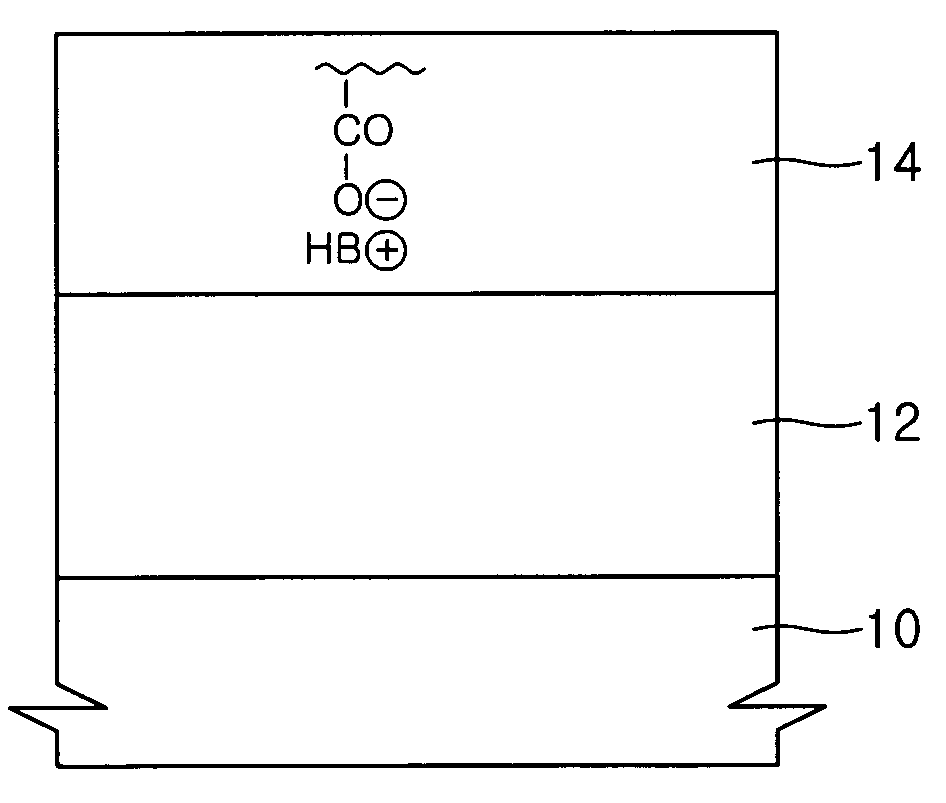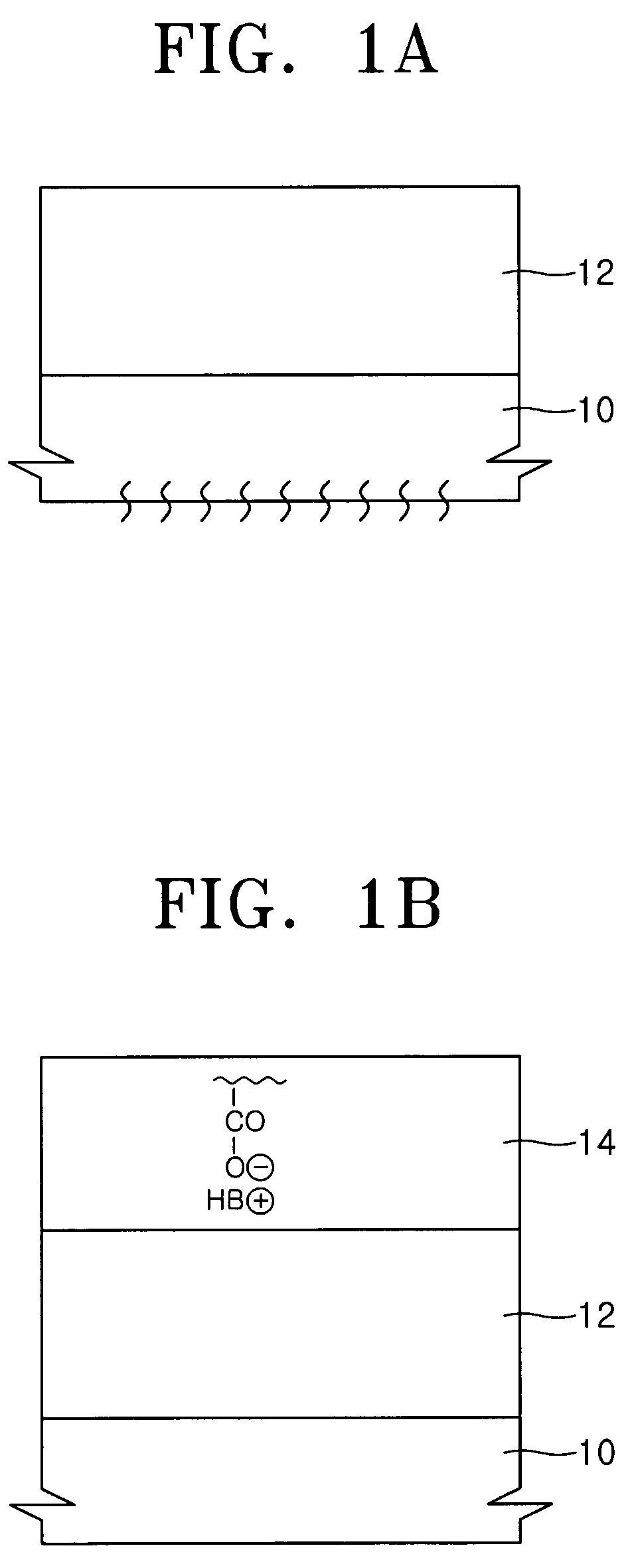Top coating composition for photoresist and method of forming photoresist pattern using same
a technology of photoresist and composition, which is applied in the direction of chemical/physical/physical-chemical stationary reactors, nuclear engineering, chemical/physical processes, etc., can solve the problems of affecting the refractive index of the immersion medium, and the inability to avoid the formation of a top coating/photoresist inter-mixing layer
- Summary
- Abstract
- Description
- Claims
- Application Information
AI Technical Summary
Benefits of technology
Problems solved by technology
Method used
Image
Examples
example 1
Example 1-1
Synthesis of a Top Coating Composition
[0089]950 mg of ethanol and 3 mg of triethanolamine dissolved in 297 mg of H2O were added to 50 mg of poly(methacrylic acid-co-t-butylmethacrylate) (methacrylic acid:t-butylmethacrylate=8:2). After complete dissolution, 3.7 g of H2O and 5 mg of KUMHO TAG (lot#020114) were added to the resultant mixture, and filtered to give a clear solution of a top coating composition.
example 1-2
Barrier Characteristics of a Top Coating Layer
[0090]The top coating composition synthesized in Example 1-1 was spin-coated onto an 8 inch bare-Si wafer having an organic layer formed thereon, thus forming a uniform top coating layer. The resultant wafer was baked at 105° C. for 90 sec, and then rinsed with deionized water for 90 sec. At this time, the dissolution rate of the top coating layer was 0.156 Å / s. The theoretical refractive index nt of the top coating layer can be calculated by the following formula: nt=(nDIW·npr)1 / 2, where nDIW is the refractive index of deionized water and npr is the refractive index of the photoresist layer. In this case, nDIW is 1.44 and npr is 1.7. Accordingly, the theoretical refractive index of the top coating layer is 1.56. However, the refractive index n and absorbance k of the top coating layer measured with a 193 nm light source were 1.410 and 0.435, respectively.
[0091]The wafer was baked at 120° C. for 60 sec, and developed with a 2.38% by weig...
example 1-3
Immersion Lithography Process with the Top Coating Layer
[0092]A photoresist pattern was formed using an immersion lithography process using a top coating layer, according to some embodiments of the present invention. Barrier characteristics of the top coating layer were measured. In this case, during the exposure, mimic immersion lithography was performed instead of exposure via a liquid immersion medium. That is, a substrate to be exposed was immersed in deionized water for 60 sec, dry-exposed, and then immersed in deionized water for 60 sec.
[0093]An anti-reflective coating (ARC) material used at an exposure wavelength of 193 mm was spin-coated on an 8-inch bare silicon wafer, and then baked to form an ARC layer with a thickness of about 300 Å. Then, a photoresist used at an exposure wavelength of 193 nm was spin-coated on the ARC layer, and then baked at 110° C. for 60 sec, thus forming a photoresist layer with a thickness of about 1800 Å. The top coating composition of Example 1-...
PUM
| Property | Measurement | Unit |
|---|---|---|
| MW | aaaaa | aaaaa |
| temperature | aaaaa | aaaaa |
| temperature | aaaaa | aaaaa |
Abstract
Description
Claims
Application Information
 Login to View More
Login to View More - R&D
- Intellectual Property
- Life Sciences
- Materials
- Tech Scout
- Unparalleled Data Quality
- Higher Quality Content
- 60% Fewer Hallucinations
Browse by: Latest US Patents, China's latest patents, Technical Efficacy Thesaurus, Application Domain, Technology Topic, Popular Technical Reports.
© 2025 PatSnap. All rights reserved.Legal|Privacy policy|Modern Slavery Act Transparency Statement|Sitemap|About US| Contact US: help@patsnap.com



